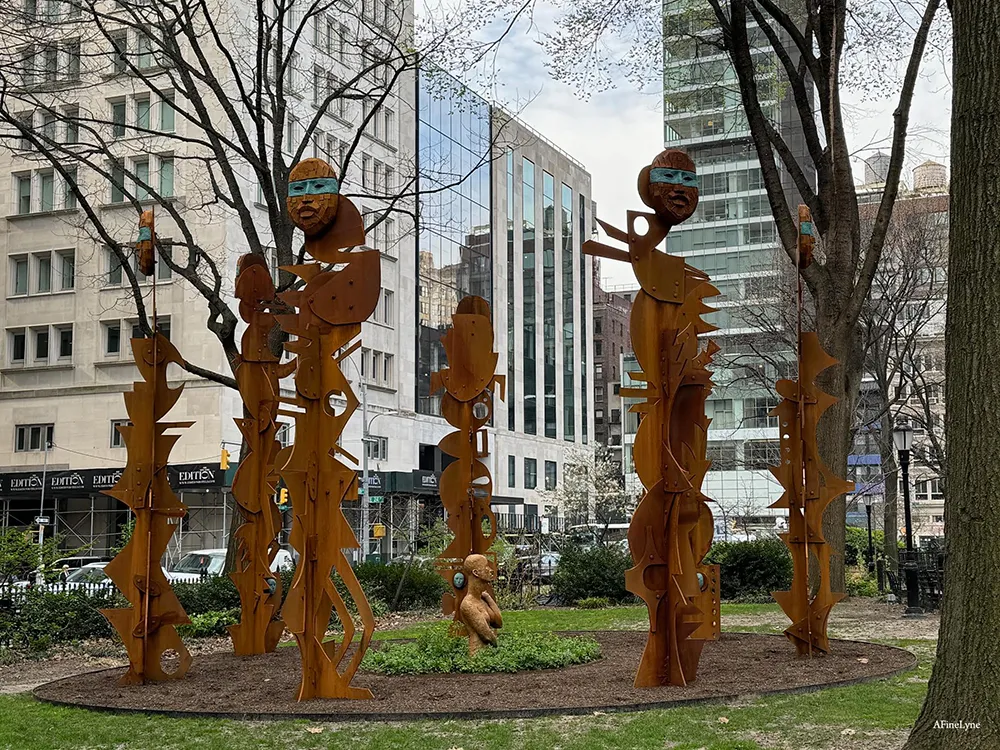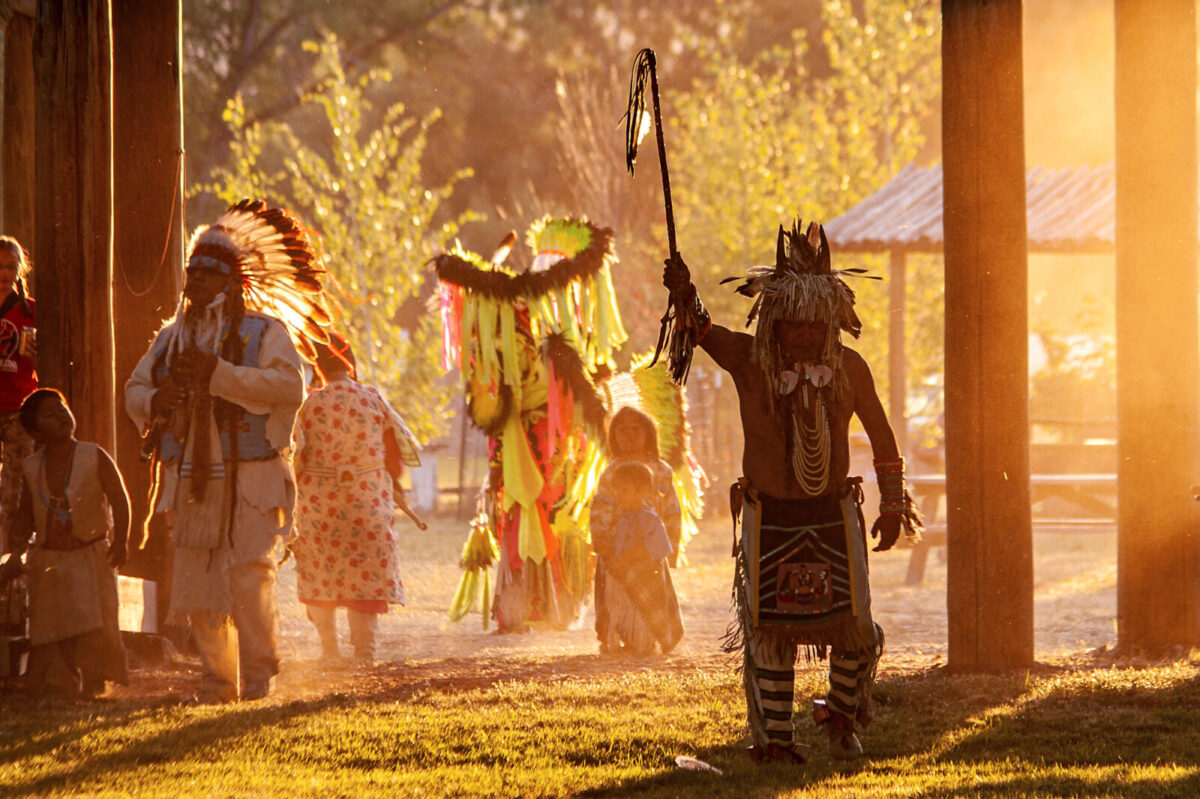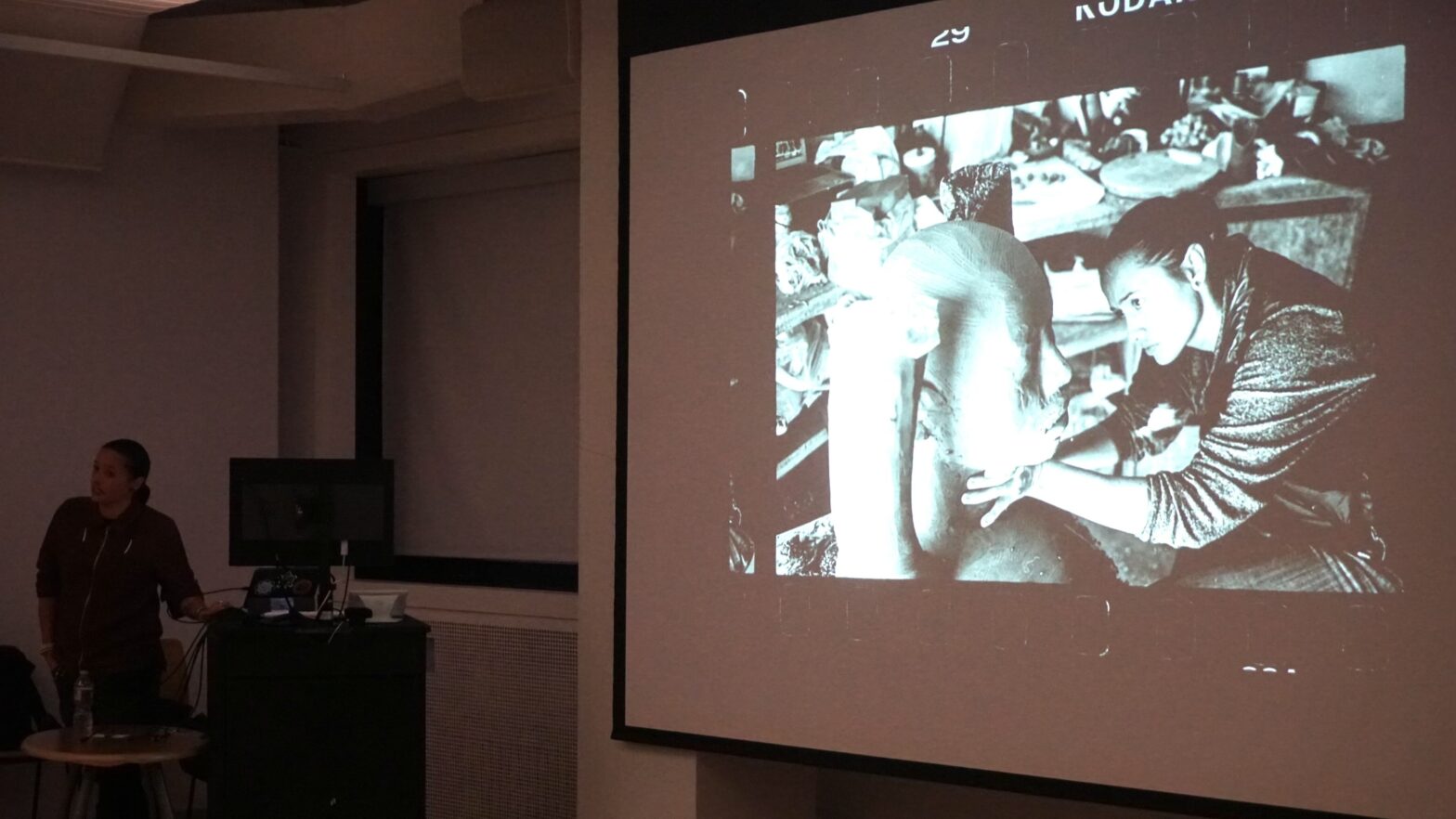Rose B. Simpson, New Red Order, and Joe Whittle come to the Parsons Fine Arts Program
While most contemporary art draws from Indigenous practices, The New School has only one Native American art teacher on staff. Seeking to expose students to Indigenous art forms, the Fine Arts program invited artists from various Native backgrounds, including Rose B. Simpson, New Red Order, and Joe Whittle, to discuss their work in both traditional and modern Indigenous-based craft as part of the Visiting Artist Lecture Series.
Rose B. Simpson – March 27, 2024
The Alvin Johnson/J.M. Kaplan Hall at Eugene Lang was filled with fine arts students and other aspiring artists, eager to attend Santa Clara Pueblo native Rose B. Simpson’s lecture.
Simpson has become mainstream with her legendary work in ceramics that takes influence from her classic training in Pueblo pottery and manifests into epicene and extrinsic clay bodies. While each piece varies in design and size, they have signature characteristics like hollow eyes, large mouths, and hyper-realistic noses and ears. Simpson insists on maintaining these elements in her pieces as she told students to, “ensure that the details in the statues never leave out the senses, giving life back to the clay.”
Some of these ceramic figures currently reside in the Whitney Biennial as a part of Simpson’s installation called “Counterculture,” which she explained honors the contributions of communities who are isolated from popular culture. This work spoke directly to the students that sat before her, as some of the art they practice also derives from cultures like Simpson’s who are not commonly accredited in education at colonized institutions like The New School.
While Simpson is usually recognized as a ceramist, she experiments with other mediums such as metal. This stems from her early infatuation with the auto body, as she watched many of the men in her community custom design their low-rider cars while growing up. This led her to take a detour from her straight shot path to art school, instead getting her degree in Automotive Science at Northern New Mexico College, where she learned how to build cars. From there, she would create one of her most beloved projects, “Maria,” a 1985 Chevy El Camino that Simpson completely restored on the interior and on the exterior, which she customized with traditional Tewa black-on-black pottery designs.
Simpson’s relationship with ceramics and metal culminated into her newest installation in Madison Square Park called “Seed.” The installation consists of towering bronze and steel figures that imitate her signature clay bodies. They are positioned in a circular formation, protecting the “seed” within, which symbolizes a woman who holds herself as she slowly sinks into the earth. Simpson, who rarely genders her sculptures, emphasized the significance of the seed to represent a woman. The “seed” looks up at future generations and tells them, “It is ok to let go, it is ok to sink in.”
As Simpson presented her last pieces of art, she asked if there were any questions, triggering a wave of hands that shot into the air. While most of the questions were centered around the technicalities of her art, Kris Waymire, an Inupiaq native artist, asked her, “How do you know what art is sacred and should be kept for yourself, and what [art] is supposed to be shared with everyone else?” to which Simpson replied, “It’s important to keep sacred and spiritual elements of my art from the outside world. I don’t want people to collect the culture that I come from, but rather connect with the human that I am.”

“Seed” by Rose B. Simpson featured at Madison Square Park.
New Red Order – April 3, 2024
While Rose B. Simpson’s guest lecture was a tough act to follow, the next artist did not disappoint. New Red Order (NRO) is a self-proclaimed “public secret society,” led by artists Jackson Polys, Adam Khalil, and Zack Khalil. Created in defiance of “The Improved Order of the Red Men” — an American all-white boys club that has infamously worn red-face and appropriated regalia since 1834 as an ode of true Patriotism — NRO aims to restore the damages caused by organizations like The Improved Order of the Red Men and other colonial entities that continue to harm the image of Indigenous peoples. They do so by communicating counter-colonialism education rooted in Indigenous Futurisms through various mediums — most famously through filmmaking.
Unfortunately, the Khalil brothers could not be in attendance for the lecture, so Polys was the individual representative from NRO. Inspired by his challenging upbringing in Alaska, where he fought to maintain his Tlingit cultural identity against a community that did not embrace him, Polys began collaborating with the Khalil film duo to create art that would support people who faced similar experiences.
Although the ethos of both Simpson and NRO’s work aligns, the mode in how it is expressed contradicts each other in almost every way. In contrast to Simpson’s art grounded in traditional Indigenous practices, NRO illustrates themes of reciprocity and reclamation through radical, extreme (and at times) disturbing imagery. The audience at the lecture bore witness to several of these films, including “Never Settle: The Program,” and “Culture Capture: Crimes Against Reality.”
The first video, “Never Settle: The Program,” is a tamer version of a typical NRO film, and is considered their brand’s promotional video. This film is structured around self-help, encouraging people to, “take control of their lives and never settle,” which elicits a double-meaning to not settle for something less and also not partake in extended forms of settler colonialism. It’s important to note that the film, along with many other NRO films, features actor Jim Fletcher, whose origin story with NRO is perhaps the most unconventional aspect of the organization.
Before joining NRO, Fletcher acted in a play where he impersonated a Chief, completely appropriating a realistic depiction of a Native American man. NRO then called him out and instead of scrutinizing him, invited him to re-educate himself on Indigenous peoples by acting in their films. He has now become what Polys considers NRO’s “muse,” as he is used as a medium to convey anti-colonial rhetoric, being someone that was previously an ignorant appropriator turned advocate.
The second film shown was “Culture Capture: Crimes Against Reality,” which experiments more with graphic design elements. It depicts a Native man on a horse and over time, the figure begins to erode and is transformed into a statue. The progression of flesh and bone dissolving into bronze was considerably graphic to view, making the impression unsettlingly memorable.
Through the films that Polys showed, it’s clear that the nature of NRO’s work wants to disrupt the normalcy and acceptance of the post-colonial society that we exist in. While it was obvious that the non-Native students in the room might have been uncomfortable — as there was not a similar reaction to a prompted open discussion like Simpson’s — the aggressive tactics that NRO utilizes are perhaps the push that we need.

Joe Whittle – April 17, 2024
The final, but perhaps the most fitting artist to visit The New School, was Joe Whittle. Whittle is Lenape — native to the land that The New School sits on — which he discussed in his lecture with the significance of his art and how it aims to decolonize the urbanization of his homelands. One of the most integral aspects of his work is that he identifies as a “story-sharer,” emphasizing the transference of ancestral knowledge through his craft. He achieves this through the mediums of photography and writing, capturing moments with his community and the culture of Native peoples today.
The lecture embodied the craft of storytelling as Whittle went through a series of photos projected on the screen and described the context for each. Some of the most prominent images featured those taken of his Native community in Lenapehoking, or what we now know as New York City. Within the deeply industrialized culture that NYC has become, Whittle captured moments shared with his friends and family where they feel connected to the land, or are continuing to process the colonial traumas that took place on it.
These include photos of his daughter, such as one of her and other Lenape women collecting wampum (mollusk shells) at Rockaway Beach. While wampum is native to Lenapehoking, it is now a rarity to find it as the land has been demolished due to the city’s expansion. He was able to immortalize this miracle by photographing the joy of these Lenape women running through the waters of their homeland, smiling as they collected these sacred shells.
Another image that conjured a dissimilar impact was also of his daughter gazing at the Statue of Liberty. While many perceive the statue as a symbol of freedom, Whittle described it as a reminder of his stolen land. This is the reason as to why his daughter faces away from the camera, so the viewer can appreciate the traditional braids that hang down her back and the regalia skirt she wears, while concealing the harrowing expression on her face as she looks forward.
While the photos depicted were powerful enough on their own, Whittle’s words that accompanied them moved the entire room. He went into great detail about his heritage and the healing he has achieved by creating art that honors Lenapehoking. Most of the questions at the end that students asked were not about the photos themselves, but about the stories behind them. “Storytelling is how we pass down our culture, our traditions, our history and it has always been that way,” Whittle said. “We identify ourselves through our stories, so what I seek to do with my work is continue that in a modern form, and try to bring that to communities outside of my own to bridge the gap between Indigenous and non-Indigenous peoples.”

The impact of Native artists at The New School
The expansiveness across these artists, including Rose B. Simpson’s traditional clay and metal creations, New Red Order’s bold films, and Joe Whittle’s authentic photography, is what should be valued in the monolith of Indigenous culture today. This is why it is imperative for students at The New School to have access to this culture in order to understand and appreciate the origins of the art they practice. While the temporary space made for three separate Native artists played a small part in this fundamental education, it is hoped to become permanent so Indigenous knowledge can be a formal practice within The New School, or the Lenape land it occupies.







